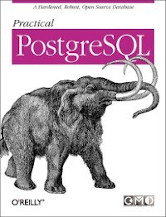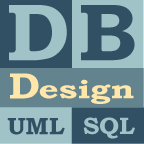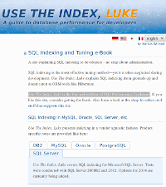Last Updated on October 25, 2024
Structured Query Language (SQL) is a specialized programming language originally developed by IBM in the early 1970s. The language is designed specifically for accessing and manipulating data held in a relational database management system (RDBMS).
Almost all database management systems have a SQL implementation. It is the most popular query language for database administrators, as it provides good functionality, power, and relative ease of use. It is widely used in both industry and academia, often for large, complex databases.
SQL was standardized by the American National Standards Institute (ANSI) in 1986 and has undergone many revisions. The language consists of a data definition language and a data manipulation language. The language is divided into a number of elements: clauses, expressions, predicates, queries, and statements. SQL is one of the easiest languages to learn and use.
1. Practical PostgreSQL by Joshua D. Drake, John C. Worsley
 Practical PostgreSQL is a comprehensive book that shows the reader how to compile PostgreSQL from source, create a database, and configure PostgreSQL to accept client-server connections. It also covers the many advanced features, such as transactions, versioning, replication, and referential integrity that enable developers and DBAs to use PostgreSQL for serious business applications.
Practical PostgreSQL is a comprehensive book that shows the reader how to compile PostgreSQL from source, create a database, and configure PostgreSQL to accept client-server connections. It also covers the many advanced features, such as transactions, versioning, replication, and referential integrity that enable developers and DBAs to use PostgreSQL for serious business applications.
The thorough introduction to PostgreSQL’s PL/pgSQL programming language explains how you can use this very useful but under-documented feature to develop stored procedures and triggers. The book includes a complete command reference, and database administrators will benefit from the chapters on user management, database maintenance, and backup & recovery. With Practical PostgreSQL, the reader will discover quickly why this open source database is a great open source alternative to proprietary products from Oracle, IBM, and Microsoft.
Chapters cover:
- Introduction and Installation.
- Using PostgreSQL – cover understanding SQL, using SQL with PostgreSQL, operators and functions, PostgreSQL clients (psql and PgAccess), and advanced features.
- Administrating PostgreSQL – authentication and encryption, database management, user and group management.
- Programming with PostgreSQL – PL/pgSQL, JDBC, and LXP.
- PostgreSQL Command Reference.
- Appendixes: Multibyte Encoding Types, Backend Options for Postgres, Binary COPY Format, and Internal pyql Variables.
This book may be distributed only subject to the terms and conditions set forth in the Open Publication License, v1.0 or later.
2. Database design with UML and SQL, 4th edition by Alvaro Monge
 Database Design with UML and SQL covers basic UML & SQL, UML design, and SQL technique.
Database Design with UML and SQL covers basic UML & SQL, UML design, and SQL technique.
The book is licensed under a Creative Commons Attribution-NonCommercial-NoDerivatives 4.0 International License.
The author is a professor of computing at California State University Long Beach.
3. “Use The Index, Luke!” by Markus Winand
 Use The Index, Luke is the free web-edition of SQL Performance Explained. This resource helps developers to improve database performance. The focus is on SQL; it covers all major SQL databases without getting lost in the details of any one specific product.
Use The Index, Luke is the free web-edition of SQL Performance Explained. This resource helps developers to improve database performance. The focus is on SQL; it covers all major SQL databases without getting lost in the details of any one specific product.
Starting with the basics of indexing and the WHERE clause, the book guides developers through all parts of an SQL statement and explains the pitfalls of object-relational mapping (ORM) tools like Hibernate.
Topics covered include:
- Anatomy of an Index – the fundamental structure of an index.
- The Where Clause – explains all aspects of the where clause, from very simple single column lookups to complex clauses for ranges and special cases such as LIKE.
- Performance and Scalability – looks at performance and scalability.
- The Join Operation – an explanation of how to use indexes to perform a fast table join.
- Clustering Data – the difference between selecting a single column and all columns.
- Sorting and Grouping – even order by and group by can use indexes.
- Partial Results – explains how to benefit from a “pipelined” execution if you don’t need the full result set.
- Insert, Delete and Update.
- Appendices: Execution Plans, Myth Directory, and Example Schema.
“Use The Index, Luke!” is licensed under a Creative Commons Attribution-Noncommercial-No Derivative Works 3.0 Unported License.
Next page: Page 2 – PostgreSQL Documentation and more books
Pages in this article:
Page 1 – Practical PostgreSQL and more books
Page 2 – PostgreSQL Documentation and more books
Page 3 – SQL for Web Nerds and more books
All books in this series:
| Free Programming Books | |
|---|---|
| Ada | ALGOL-like programming language, extended from Pascal and other languages |
| Agda | Dependently typed functional language based on intuitionistic Type Theory |
| Arduino | Inexpensive, flexible, open source microcontroller platform |
| Assembly | As close to writing machine code without writing in pure hexadecimal |
| Awk | Versatile language designed for pattern scanning and processing language |
| Bash | Shell and command language; popular both as a shell and a scripting language |
| BASIC | Beginner’s All-purpose Symbolic Instruction Code |
| C | General-purpose, procedural, portable, high-level language |
| C++ | General-purpose, portable, free-form, multi-paradigm language |
| C# | Combines the power and flexibility of C++ with the simplicity of Visual Basic |
| Clojure | Dialect of the Lisp programming language |
| ClojureScript | Compiler for Clojure that targets JavaScript |
| COBOL | Common Business-Oriented Language |
| CoffeeScript | Transcompiles into JavaScript inspired by Ruby, Python and Haskell |
| Coq | Dependently typed language similar to Agda, Idris, F* and others |
| Crystal | General-purpose, concurrent, multi-paradigm, object-oriented language |
| CSS | CSS (Cascading Style Sheets) specifies a web page’s appearance |
| D | General-purpose systems programming language with a C-like syntax |
| Dart | Client-optimized language for fast apps on multiple platforms |
| Dylan | Multi-paradigm language supporting functional and object-oriented coding |
| ECMAScript | Best known as the language embedded in web browsers |
| Eiffel | Object-oriented language designed by Bertrand Meyer |
| Elixir | Relatively new functional language running on the Erlang virtual machine |
| Erlang | General-purpose, concurrent, declarative, functional language |
| F# | Uses functional, imperative, and object-oriented programming methods |
| Factor | Dynamic stack-based programming language |
| Forth | Imperative stack-based programming language |
| Fortran | The first high-level language, using the first compiler |
| Go | Compiled, statically typed programming language |
| Groovy | Powerful, optionally typed and dynamic language |
| Haskell | Standardized, general-purpose, polymorphically, statically typed language |
| HTML | HyperText Markup Language |
| Icon | Wide variety of features for processing and presenting symbolic data |
| J | Array programming language based primarily on APL |
| Java | General-purpose, concurrent, class-based, object-oriented, high-level language |
| JavaScript | Interpreted, prototype-based, scripting language |
| Julia | High-level, high-performance language for technical computing |
| Kotlin | More modern version of Java |
| LabVIEW | Designed to enable domain experts to build power systems quickly |
| LaTeX | Professional document preparation system and document markup language |
| Lisp | Unique features - excellent to study programming constructs |
| Logo | Dialect of Lisp that features interactivity, modularity, extensibility |
| Lua | Designed as an embeddable scripting language |
| Markdown | Plain text formatting syntax designed to be easy-to-read and easy-to-write |
| Objective-C | Object-oriented language that adds Smalltalk-style messaging to C |
| OCaml | The main implementation of the Caml language |
| Pascal | Imperative and procedural language designed in the late 1960s |
| Perl | High-level, general-purpose, interpreted, scripting, dynamic language |
| PHP | PHP has been at the helm of the web for many years |
| PostScript | Interpreted, stack-based and Turing complete language |
| Prolog | A general purpose, declarative, logic programming language |
| PureScript | Small strongly, statically typed language compiling to JavaScript |
| Python | General-purpose, structured, powerful language |
| QML | Hierarchical declarative language for user interface layout - JSON-like syntax |
| R | De facto standard among statisticians and data analysts |
| Racket | General-purpose, object-oriented, multi-paradigm, functional language |
| Raku | Member of the Perl family of programming languages |
| Ruby | General purpose, scripting, structured, flexible, fully object-oriented language |
| Rust | Ideal for systems, embedded, and other performance critical code |
| Scala | Modern, object-functional, multi-paradigm, Java-based language |
| Scheme | A general-purpose, functional language descended from Lisp and Algol |
| Scratch | Visual programming language designed for 8-16 year-old children |
| SQL | Access and manipulate data held in a relational database management system |
| Standard ML | General-purpose functional language characterized as "Lisp with types" |
| Swift | Powerful and intuitive general-purpose programming language |
| Tcl | Dynamic language based on concepts of Lisp, C, and Unix shells |
| TeX | Markup and programming language - create professional quality typeset text |
| TypeScript | Strict syntactical superset of JavaScript adding optional static typing |
| Vala | Object-oriented language, syntactically similar to C# |
| VHDL | Hardware description language used in electronic design automation |
| VimL | Powerful scripting language of the Vim editor |
| XML | Rules for defining semantic tags describing structure ad meaning |
